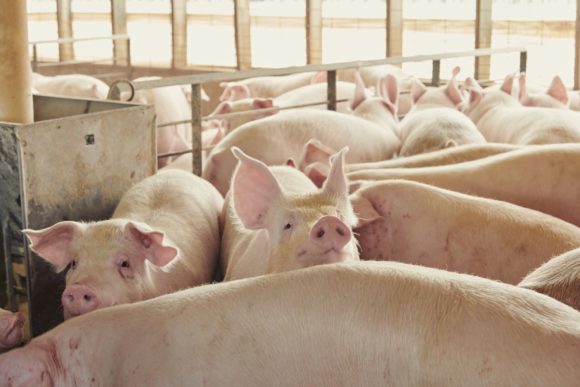The obvious obstacles in America’s food-supply chain — from shuttered meat plants to restocking delays and panic buying — have largely dissipated. But shock waves remain.
There are millions of pigs that need to get processed fast, before their weights become too burdensome, or farmers will be forced to euthanize the animals. Meanwhile, food sellers like pizza maker Papa John’s International Inc. and Campbell Soup Co. had to bulk up on extra ingredients to avoid further disruption. Kraft Heinz Co., the giant that makes ketchup and cream cheese, had to expand its lists of usual suppliers for some items, while livestock-feed makers were forced to reformulate rations.
Take the case of Tyler Beaver, the 31-year-old founder of brokerage Beaf Cattle Co., who helps connects farmers and ranchers with buyers for their animals. Even though meat plants owned by giants like Smithfield Foods Inc. and Tyson Foods Inc. are mostly running again, he’s still busy dealing with a backlog of animals after coronavirus outbreaks shuttered slaughterhouses in April and May.
“It will take a long time before things get back to normal,” he said.
Beaver is connecting farmers to wholesale buyers that sell pigs to individuals instead of meat companies. The efforts are “helping and we are doing good, but they are still having to cull a lot of pigs every day,” he said.
In the last few months, Americans have experienced food shortages in ways the country hasn’t seen for decades. It was shocking for consumers to walk into grocery stores and not find the overflowing shelves they’d come to take for granted. Even Wendy’s Co. dropped burgers from some menus. Many analysts and experts dubbed the supply chain as broken.
But the U.S. food system wasn’t developed by accident. It’s a complex and interconnected web that thrives on huge economies of scale, allowing everything from dairy to meat to vegetables to be produced quickly and efficiently. The problem is, the industry has become so intertwined that any hiccup can trigger a series of domino effects.
The cascade of unexpected impacts forced the largest food companies to rethink their usual production methods.
Kraft Heinz had to seek out new sources of carbon dioxide, used in refrigeration. That was a knock-on effect from ethanol plants shutting. Beer makers also were left without the C02, a biofuel bydproduct they use to make their beverages fizz.
“It was an unexpected outcome of this crisis,” said Kraft Chief Procurement Officer Marcos Eloi.
Shortfalls at grocery stores along with concerns for worker health have sparked calls for production to be carried out on a smaller scale and through more localized markets. The answer may not be that simple. Consumer prices would certainly increase in that type of production system, and eliminating economies of scale would also do away with the efficiencies that have been built to make food quickly and with less waste.
“There’s a lot of big companies that produce a lot, and what’s not obvious to people is that you need those sorts of economies of scale to produce affordable food,” said Jayson Lusk, head of agricultural economics at Purdue University. “People are talking about smaller, regional scale, but would some sort of food system like this be more resilient to the type of shocks we’ve seen? I don’t think so. No system can respond that quickly to that type of demand shock.”
About the photo: Pigs stand in a pen at a farm near Le Mars, Iowa, U.S., on Wednesday, May 27, 2020. Wholesale pork prices have increased 51 percent, the USDA reported. Surging wholesale meat prices are starting to push up prices at grocery stores, while the risk of shortages is growing at a time that shoppers continue to fill their pantries and freezers with stay-at-home staples.
Was this article valuable?
Here are more articles you may enjoy.


 Billionaire NFL Owner Suing Over Billboards Near His SoFi Stadium
Billionaire NFL Owner Suing Over Billboards Near His SoFi Stadium  Tesla, EEOC Plan Talks to Settle Factory Racism Suit
Tesla, EEOC Plan Talks to Settle Factory Racism Suit  JPMorgan Wins Gender Pay Gap Dispute Against London Analyst
JPMorgan Wins Gender Pay Gap Dispute Against London Analyst  Singer’s Elliott Sued by PE Firm in Escalating Fight Over Money
Singer’s Elliott Sued by PE Firm in Escalating Fight Over Money 